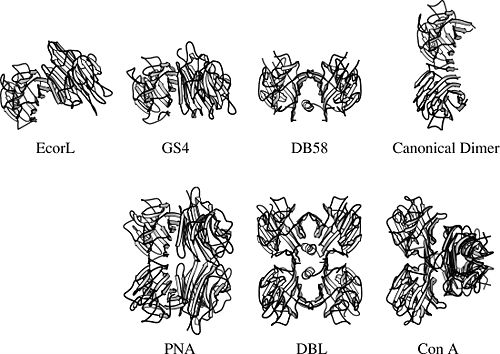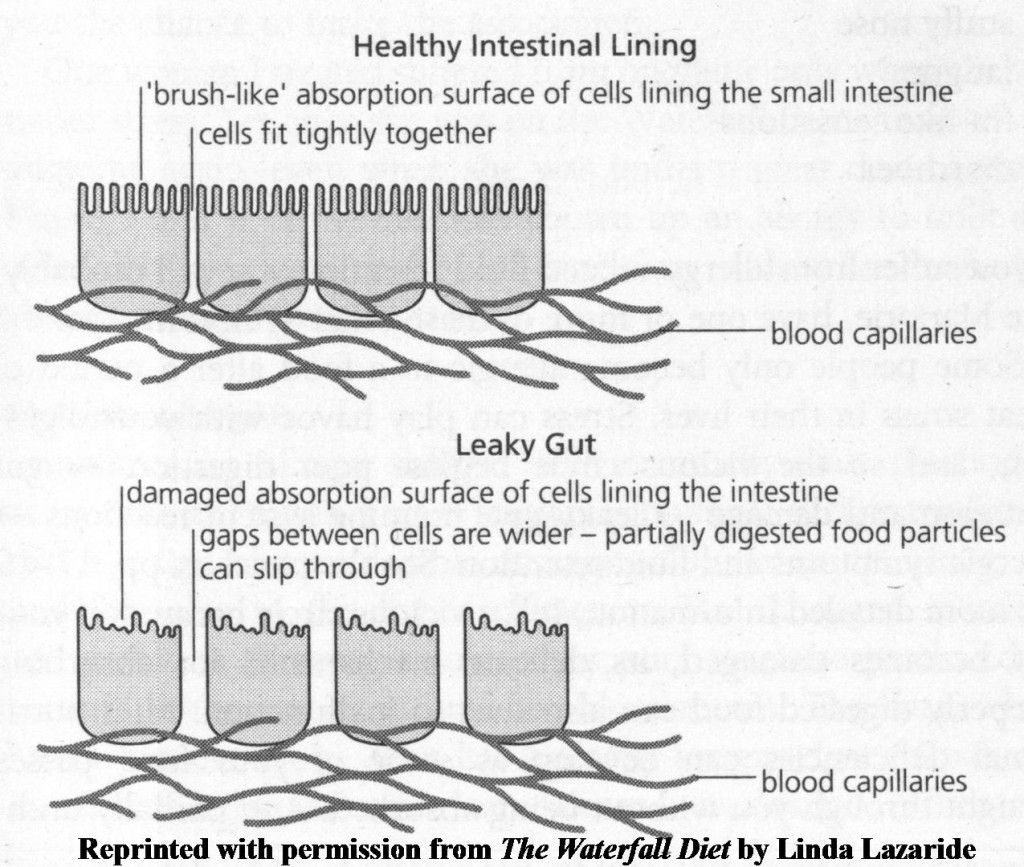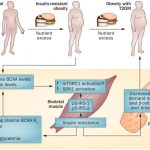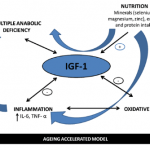What are lectins?
Contents
Lectins are a type of protein that can bind to cell membranes. They are sugar-binding and become the “glyco” portion of glycoconjugates on the membranes. Lectins offer a way for molecules to stick together without getting the immune system involved, which can influence cell-cell interaction.
Lectins are abundant in raw legumes and grains, and most commonly found in the part of the seed that becomes the leaves when the plant sprouts, aka the cotyledon, but also on the seed coat. They’re also found in dairy products and certain vegetables. While lectin content in food is fairly constant, the genetic altering of plants has created some fluctuations.
Lectins in plants are a defense against microorganisms, pests, and insects. They may also have evolved as a way for seeds to remain intact as they passed through animals’ digestive systems, for later dispersal. Lectins are resistant to human digestion and they enter the blood unchanged.
Effects of lectin ingestion on animal growth and internal organs
Why are lectins so important?
Lectins are thought to play a role in immune function, cell growth, cell death, and body fat regulation.
Immune response and toxicity
Because we don’t digest lectins, we often produce antibodies to them. Almost everyone has antibodies to some dietary lectins in their body. This means our responses vary. Certain foods can even become intolerable to someone after an immune system change or the gut is injured from another source. The presence of particular lectins can stimulate an immune system response.
There are some lectins that no one should consume. Ever wonder why you don’t see sprouted red kidney beans?
It’s due to phytohaemagglutinin – a lectin that can cause red kidney bean poisoning. The poisoning is usually caused by the ingestion of raw, soaked kidney beans. As few as four or five raw beans can trigger symptoms.
Raw kidney beans contain from 20,000 to 70,000 lectin units, while fully cooked beans usually contain between 200 and 400 units.
Beneficial lectins
While many types of lectins cause negative reactions in the body, there are also health promoting lectins that can decrease incidence of certain diseases. Furthermore, the body uses lectins to achieve many basic functions, including cell to cell adherence, inflammatory modulation and programmed cell death.
What you should know about lectins
Ingesting lectins can cause flatulence. Consuming legumes and grains in their raw form can even result in nausea, diarrhea and vomiting. Indeed, researchers speculate that many apparent causes of bacterial food poisoning may actually be lectin poisoning.
Lectins and the intestinal wall
This GI distress happens because lectins can damage the intestinal lining.
As food passes through the gut, it causes very minor damage to the lining of the GI tract. Normally the cells repair this damage rapidly. Since the purpose of the gut lining is to let the good stuff past and keep the bad stuff contained, it’s important for the cellular repair system to be running at full efficiency.
But lectins can blunt this speedy reconstruction. Our cells can’t regenerate as fast as they need to in order to keep the intestinal lining secure. Thus, our natural gut defenses are compromised after the damage occurs and the gut can become “leaky,” allowing various molecules (including stuff we don’t want) to pass back and forth amid the gut wall. We may also not absorb other important things, such as vitamins and minerals, properly.
When enough lectins are consumed, it can signal our body to evacuate GI contents. This means vomiting, cramping and diarrhea. It’s similar to consuming large amounts of alcohol, which can damage the GI lining and cause GI evacuation.
Lectins and immune response
When lectins affect the gut wall, it may also cause a broader immune system response as the body’s defenses move in to attack the invaders.
Symptoms can include skin rashes, joint pain, and general inflammation. Other chronic disorders may be correlated with leaky gut — for example, researchers have even noted that children with autism have very high rates of leaky gut and similar inflammatory GI tract diseases.
When someone suffers from Crohn’s disease or irritable bowel syndrome, the gut lining seems to be more sensitive to food lectins. This might be due to the high turnover of cells and greater population of the immature variety. These immature cells have plenty of spots for lectins to attach.
The effects of dietary lectins only extend for as long as they are in the body, and the effects can be reduced by eating a variety of fruits, vegetables (rather than high amounts of one type) and foods with beneficial bacteria (e.g., fermented foods).
Lectins and grains
Unrefined grains are more nutritious than refined versions because they contain more nutrients. However, they also provide more lectins (and other anti-nutrients).
While this was likely never a problem when we grew and harvested our own grains, we now have access to MANY whole grain products. Before the invention of modern agriculture, grains were a minor and seasonal crop. Now we can go to the market for 15 minutes and have a cart full of whole grain pasta, bread, rice, quinoa, kamut, amaranth, oats, barley and chips.
The average North American diet is highly grain-based: bread, pasta, rice, cereals, etc. are everywhere, especially in processed foods.
Was the body ever equipped to deal with that type of grain onslaught?
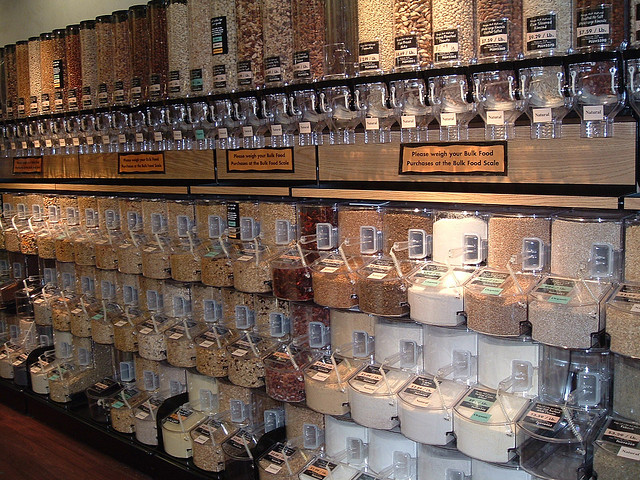
Our ancestors grasped the concept of “survival of the fittest,” and found a solution to the problem of lectins. Soaking, fermenting, sprouting and cooking will decrease lectins and free up the good nutrients. The content of lectins in foods differs year to year and crop to crop.
Grain, cereal, dairy, and legume (especially peanut and soybean) lectins are most commonly associated with reports of digestive complaints. Legumes and seafood are the most abundant sources of lectins in most diets.
How can we reduce or neutralize lectins?
Sprouting
Sprouting seeds, grains or beans decreases the lectin content.
Generally, the longer the duration of sprouting, the more lectins are deactivated. In some cases the lectin activity is enhanced by sprouting (like alfalfa sprouts). The lectins in some grains and beans are in the seed coat. As it germinates, the coat is metabolized – eliminating lectins.
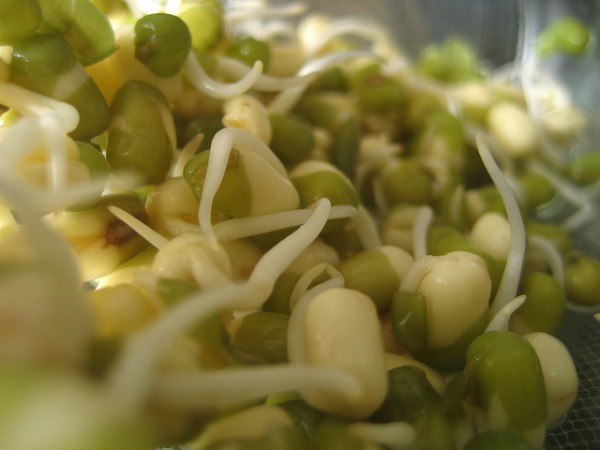
Soaking and cooking
Even wonder why grandma bothered with the long soak, rinse and boil session when preparing beans and grains? Lectin reduction. This is probably the most classic method of preparing beans and grains.
Soak beans and legumes overnight, and change the water often. Drain and rinse again before cooking. Adding sodium bicarbonate (aka baking soda) to the soaking water may help neutralize the lectins further.
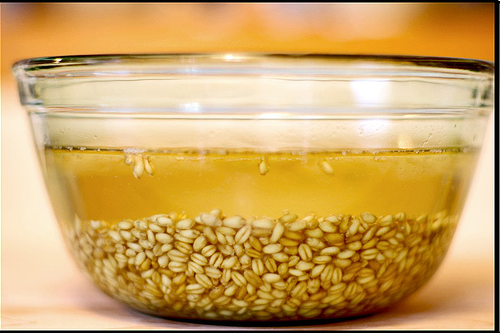
Fermenting
Fermentation allows beneficial bacteria to digest and convert many of the harmful substances.
This might be why the healthiest populations stick with fermented soy products like tofu, miso, tempeh, tamari and natto. Even some vegetables, such as cabbage, may have fewer antinutrients when fermented. Cultures with a history of grain eating traditionally have used some form of fermentation to treat grains. If you’ve had sourdough bread or beer, you’ve had fermented grains.
Not all lectins are completely destroyed by these methods, and some particularly stubborn lectins in beans remain no matter how lengthy the treatment. Thus, these techniques don’t totally reduce the negative effects for everyone.
Some have argued that since agriculture is a relatively recent invention, humans did not evolve to tolerate grains nor beans well in any case. For some susceptible people, consuming a “Paleo-style” diet, where carbohydrates come from fruits and vegetables, rather than grains and beans, may be beneficial.
Summary and recommendations
Since lectins are so widely distributed in food items commonly consumed by humans, and have been for many centuries, most nutrition experts assume they don’t pose a significant risk to human health.
Still, it does appear that chronic ingestion of untreated high-lectin foods may warrant further consideration. If you consume a diet with plenty of lectin-rich foods, try to reduce the amount by soaking, fermenting, sprouting and/or cooking.
Extra credit
Certain seaweeds and mucilaginous vegetables have the ability to bind lectins in a way that makes them unavailable to the cells of the gut.
Lectins are resistant to dry heat, so using raw legume flours in baked goods should be done with caution.
The “Blood Type Diet” is based on how our blood cells react with lectins in foods.
Some experts hypothesize that it’s no coincidence the top 8 allergens also contain some of the highest amounts of lectins (including: dairy, egg, wheat, soy, peanuts, tree nuts, fish, shellfish).
Some experts theorize that lectins cause urinary tract infections.
Some experts theorize that the reason anemia is higher in developing countries is due to excessive levels of lectin consumption.
http://www.precisionnutrition.com/all-about-lectins
The bottom line- Are lectins a matter of concern?
It is a fact that dietary lectins can be toxic when consumed in large doses, but humans don’t have them in large doses. Foods like grains and legumes that are rich in legumes are always cooked before being consumed leaving only a negligible amount of lectins. This makes the foods safe to eat for majority of the people.
People who suffer from digestive or autoimmune problems may respond well when kept on a diet free of lectins, and this includes dairy, eggs and plants that belong to the nightshade family such as potatoes.
The amount of lectin is way too low in foods and it should not be a real concern for healthy people.The lectin containing foods are high in fibre, minerals, vitamins, antioxidants and many beneficial compounds. The benefits outweigh the negative effects of lectins that are present in trace amounts.
Modern grains and modern disease
Increasing numbers of scientists and medical professionals are beginning to make the connection between modern wheat and chronic digestive and inflammatory illnesses. Inflammation is the body’s natural response to pathogens and wounds, but persistent low grade inflammation (LGI) or continual activation of immune cells through incessant exposure to triggers is associated with a host of diseases including cardiovascular disease, metabolic syndrome, cancer, autoimmune diseases, Alzheimer’s disease, schizophrenia and depression.
- Inflammation in response to injury is good, but a low continuous burn from constant triggers can be deadly.
Phytates, gluten and lectins – three poisons we can live without
Phytates – Phytates, also found in lesser quantities in nuts and seeds, are not inherently damaging, but they do bind to dietary minerals and prevent their absorption. They’re not as harmful as gluten and lectins if the rest of your diet is mineral rich. To help break down phytates, you can soak food in yogurt, buttermilk, or water combined with lemon juice or vinegar.
Gluten – Gluten is a protein which enables bread to rise by forming gas cells that hold carbon dioxide during fermentation. Modern technology has increased the amount in wheat so that it now contains about 80% gluten.
Lectins – Lectins are so small and hard to digest that they tend to bio-accumulate in your body. They damage the gut lining which leads to leaky gut and other disorders. Lectins also cause leptin resistance, which means that your hunger signal is suppressed and that you’ll be hungry even when your body has had more than enough calories. They’re resistant to heat and digestive enzymes and can bind to almost all cell types, causing damage to tissues and organs.
All seeds of the grass family are high in lectins which cause agglutination.
- Here’s the Merriam Webster definition of agglutination – “a reaction in which particles (as red blood cells or bacteria) suspended in a liquid collect into clumps and which occurs especially as a serological response to a specific antibody”.
What agglutinin is capable of doing to us is this:
- It stimulates the synthesis of chemical messengers that are responsible for inflammation in response to some injury or invasion.
- It inhibits nerve growth factor which keeps neurons alive and thriving (9), and sticks to the protective covering of nerves (the myelin sheath)
- New research is showing that it may disrupt endocrine function and interfere with other genetic expression. (10)
- It shares similarities with certain viruses (10)
- It induces platelet aggregation (11)
- It stimulates pro-inflammatory cytokines and causes gut permeability (12) which allows bacteria and large particles to enter the bloodstream
- Gliadin epitopes in modern wheat contribute to gut-permeating activity that moves dietary antigens into your blood stream. It’s believed to be causative in autoimmune diseases such as rheumatoid arthritis, multiple sclerosis, inflammatory bowel disease (ulcerative colitis), asthma, chronic fatigue syndrome and depression. 30% of the population has noticeable amounts of anti-gliadins in their stools. Anti-gliadins are antibodies secreted when the body sees gliadin, a constituent of gluten, as an intruder. Having the antibody in your stools means that your body is actively fighting an intruder and that you already have low level inflammation.
- Gluten triggers the over-abundance of zonulin, a protein which is responsible for the permeability of tight junctions between cells of the wall of the digestive tract. Too much zonulin production disrupts intestinal barrier function
- Aggliglutin binds to the outer coating of human cells, can cross the blood-brain barrier allowing bacteria to enter cells (14)
What are some healthy alternatives?
The Paleo eating protocol revolves around whole foods including meat and plants, but not industrialized plants such as wheat and other grains. Don’t be fooled by products that claim to be whole wheat. In some countries, whole wheat products contain nothing more than white flour with some bran added back in. The whole grain is not used and it’s processed the same way as barren white flour. If you can’t live without baked goods, make sure you read labels thoroughly.
Try some of these healthy tips.
Replace grain flour – Use almond or coconut flour. There are hundreds of online recipes using these flours.
Soak and sprout nuts and seeds and grind into flour – Nuts and seeds contain enzyme inhibitors that stop them from sprouting too early. This works out in nature, but for us, when enzymes are blocked, we can’t make use of them.
To soak: Soaking releases the enzyme inhibitors so they help us digest these foods. It also neutralizes phytic acid, a component of plant fiber in grains, legumes, nuts, and seeds that reduces mineral absorption.
- Use raw nuts or seeds. Cover with filtered water to about 2 inches above and let them soak overnight. Make sure the bowl is big enough to accommodate the swelling that will take place. Drain and discard the soak water.
- Use right away or store soaked nuts and seeds in the refrigerator for 2-3 days.
To sprout: Sprouting increases the total nutrient density of a food.
- Use raw presoaked nuts or seeds. Spread them out on a plate giving them a bit of space and cover lightly with cheesecloth or clean unbleached muslin. Rinse twice a day.
- A tiny white tail will appear from the narrow end when they begin to sprout. Use them right away or store in a jar in the refrigerator.
Make your own sprouted granola – Soak almonds, pecans, macadamia nuts, and chia seeds in water for 8 hours then set them out for a day on a paper towel. Toss them in a small amount of raw local unpasteurized honey, and add organic raisins, coconut flakes, cinnamon and sea salt. Place them in a dehydrator or oven and you have a great tasting metabolism boosting snack.
http://paleoleap.com/what-is-wrong-with-grains/





